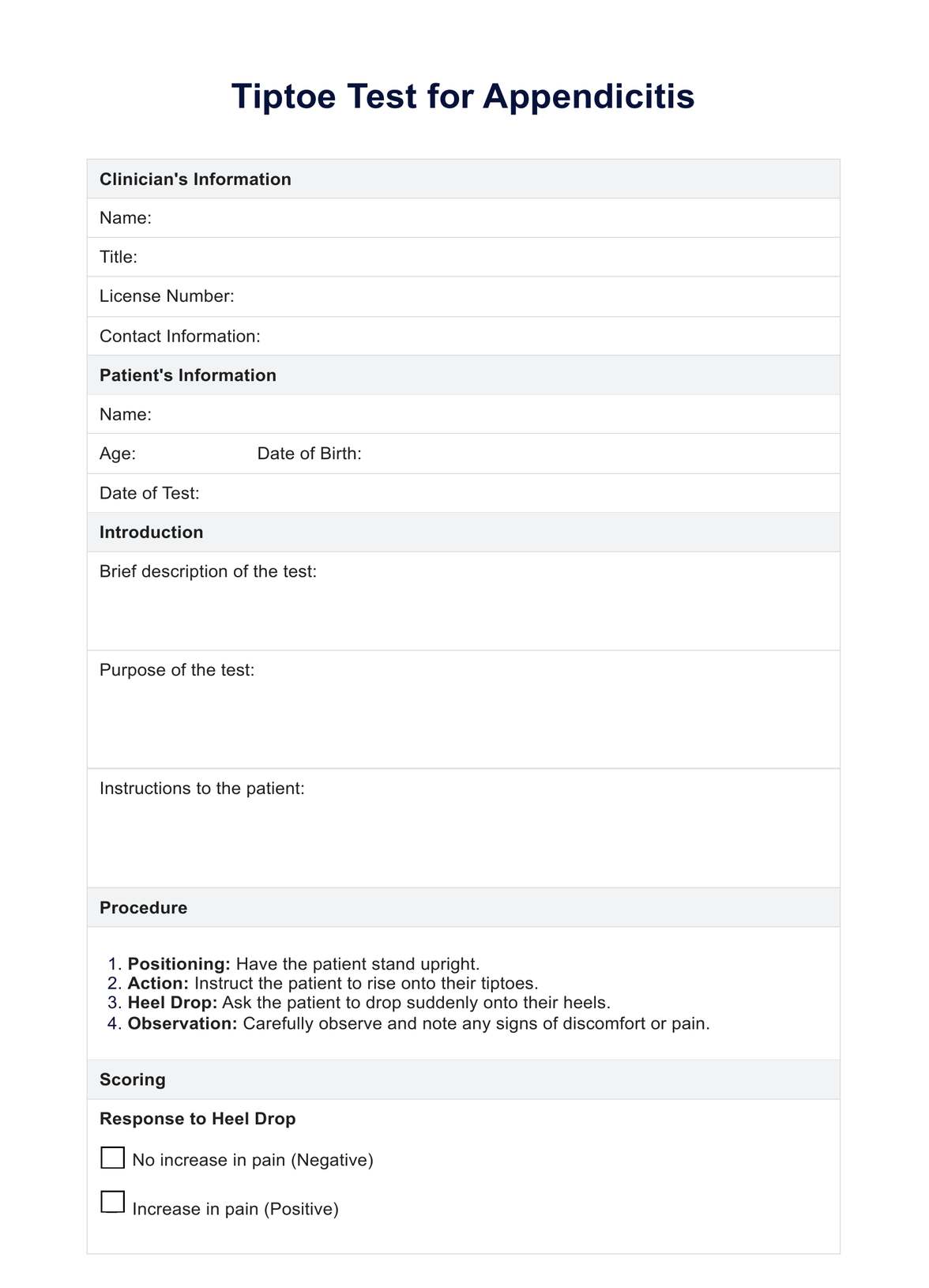The tiptoe test is a useful tool but should be used in conjunction with other diagnostic methods for greater accuracy.

Tiptoe Test for Appendicitis
Discover Carepatron, the ultimate general practice software for healthcare professionals. Streamline patient management with user-friendly features.
Use Template
Tiptoe Test for Appendicitis Template
Commonly asked questions
Yes, the tiptoe test can be used for patients of all ages, although it is often used in pediatric patients.
The test may not be definitive for all patients, especially those with atypical presentations of appendicitis or other abdominal conditions.
EHR and practice management software
Get started for free
*No credit card required
Free
$0/usd
Unlimited clients
Telehealth
1GB of storage
Client portal text
Automated billing and online payments











